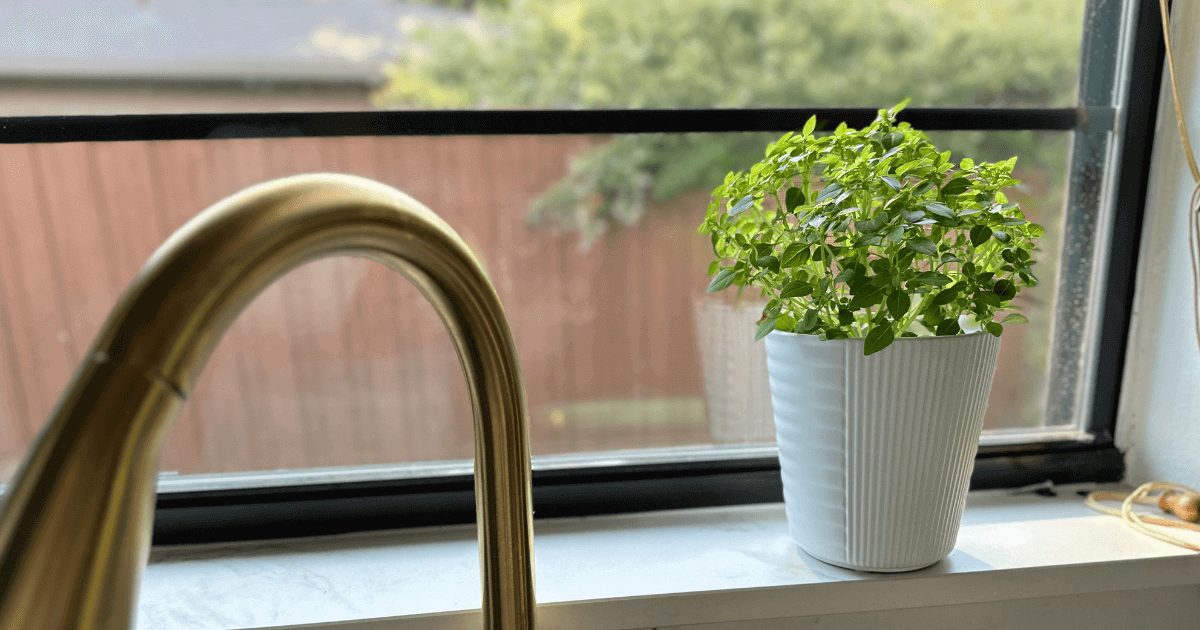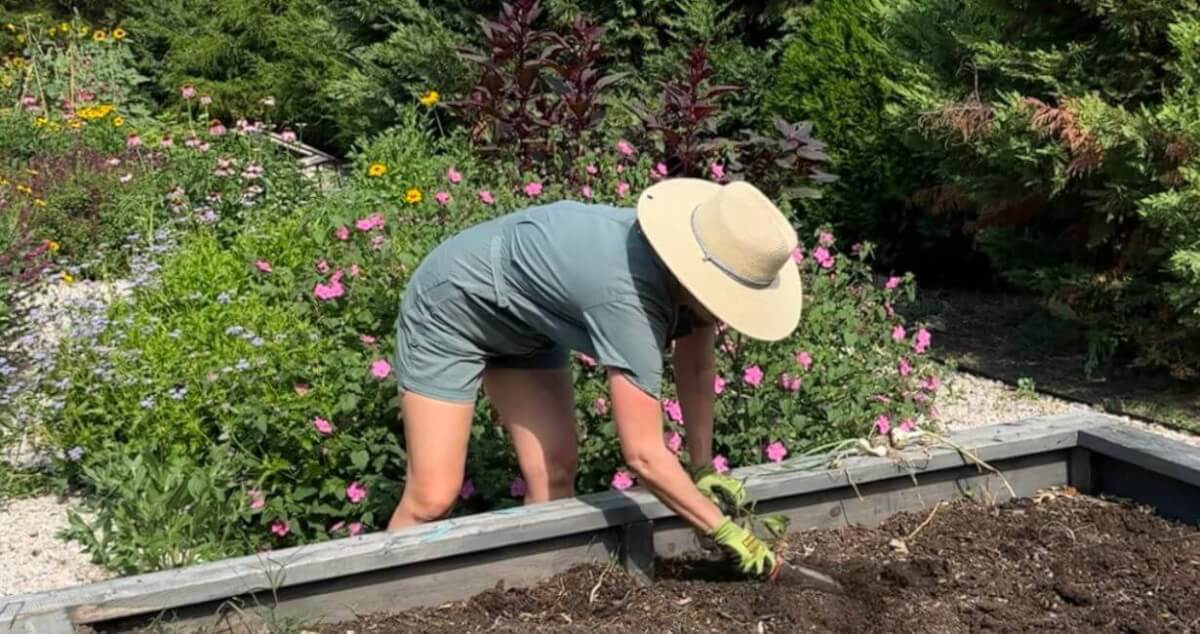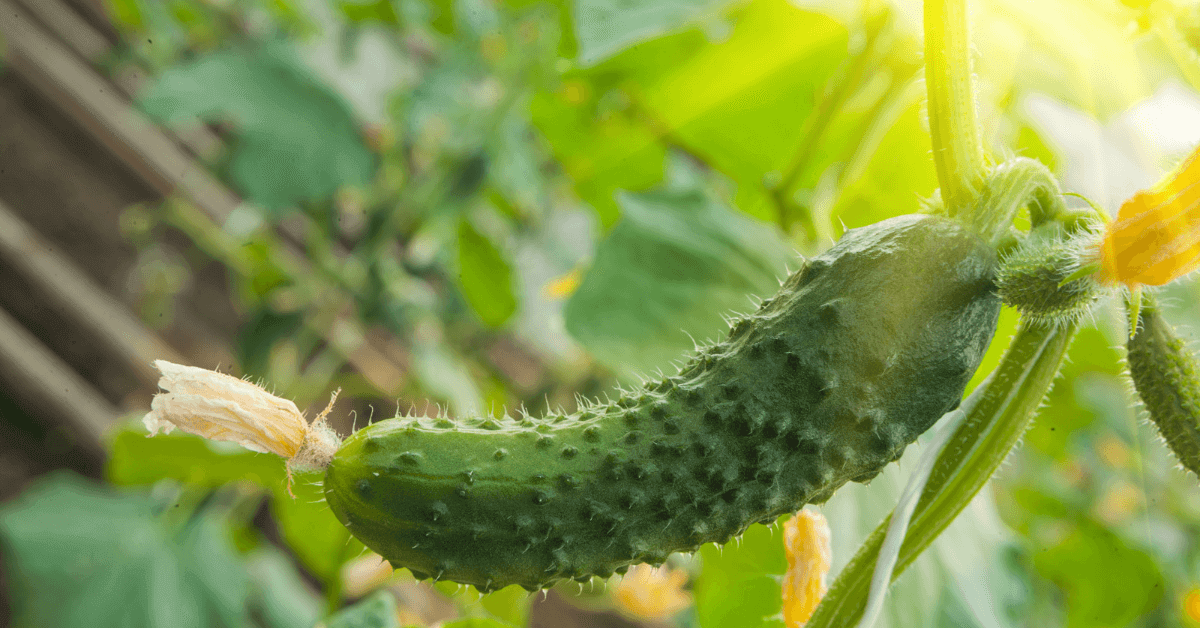
I love growing cucumbers, and my pantry is stacked floor to ceiling with pickle jars to prove it! If you’re eager to enjoy a bountiful harvest of fresh, crisp cucumbers from your own garden, I’ve got you covered. Here is a comprehensive guide to growing cucumbers in North Texas.
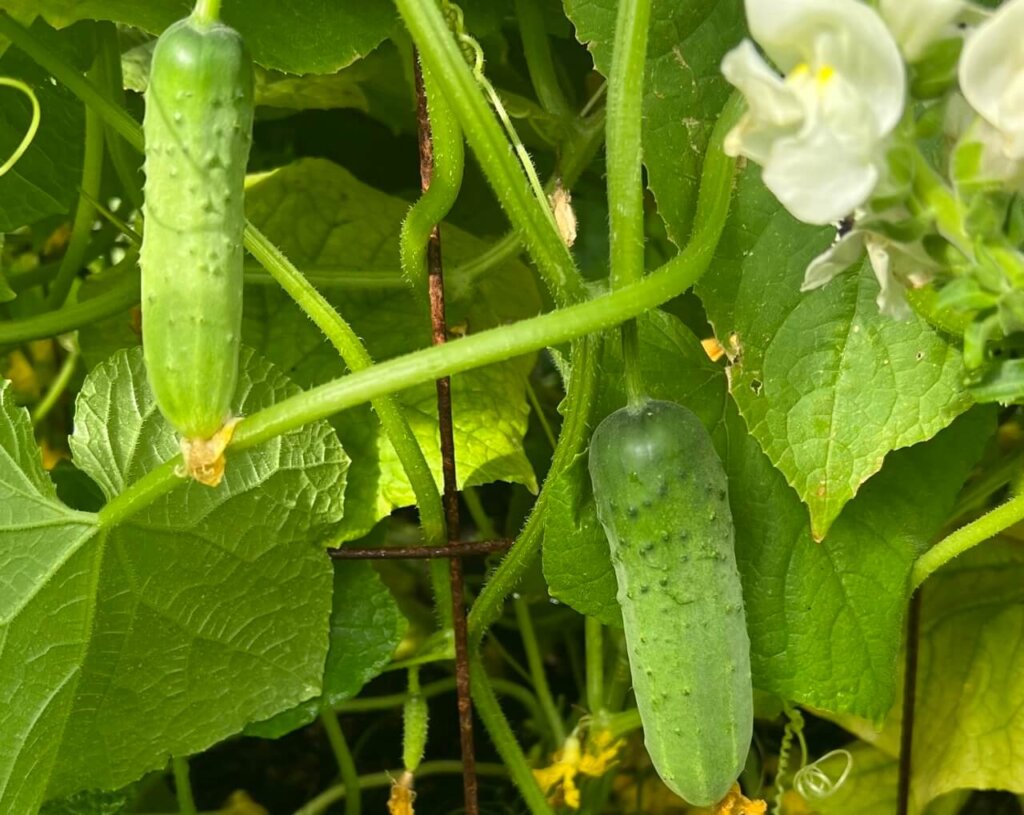
1. Select the Right Variety
When it comes to growing cucumbers in North Texas, it’s essential to choose the right variety. Look for varieties that are small to medium in size and heat tolerant.
My favorite varieties to grow include ‘Homemade Pickles’, ‘Green Fingers’, and ‘Marketmore’. I also like experimenting with different Asian varieties such as ‘Tokiwa’, ‘Asian Eun Cheon’, and ‘Suyo Long’.
2. Planting Time
In North Texas, the best time to plant cucumbers is in late March or early April after all chances of frost have passed. Don’t delay getting your seeds planted because you want to your plants to produce as much as possible before the high heat arrives in July.
High temperatures reduce the viability of pollen, and cucumbers stop producing. Cucumbers grown in high heat also tend to be bitter.
Luckily, we have two growing seasons here in North Texas. If you want to have a fall harvest, you can plant cucumbers again in late July or early August.
3. Soil Preparation
Cucumbers prefer well-drained soil that is rich in organic matter. Prepare the soil by adding compost to improve the soil quality. You can also add a slow-release, organic
I like Micro Life Multi Purpose 6-2-4.
4. How to plant
Plant cucumbers in a sunny location with at least 6-8 hours of direct sunlight per day. Cucumbers can be grown on trellises, stakes, or fences to save space and provide support for the plants. Plant seeds about 1 inch deep and 6 inches apart. After germination, thin to 12″ apart.
Once the seedlings are four to six inches tall, mulch the bare soil to a depth of 3 inches with shredded hardwood mulch. Mulch conserves moisture, cools soil, prevents disease, and suppresses weeds.
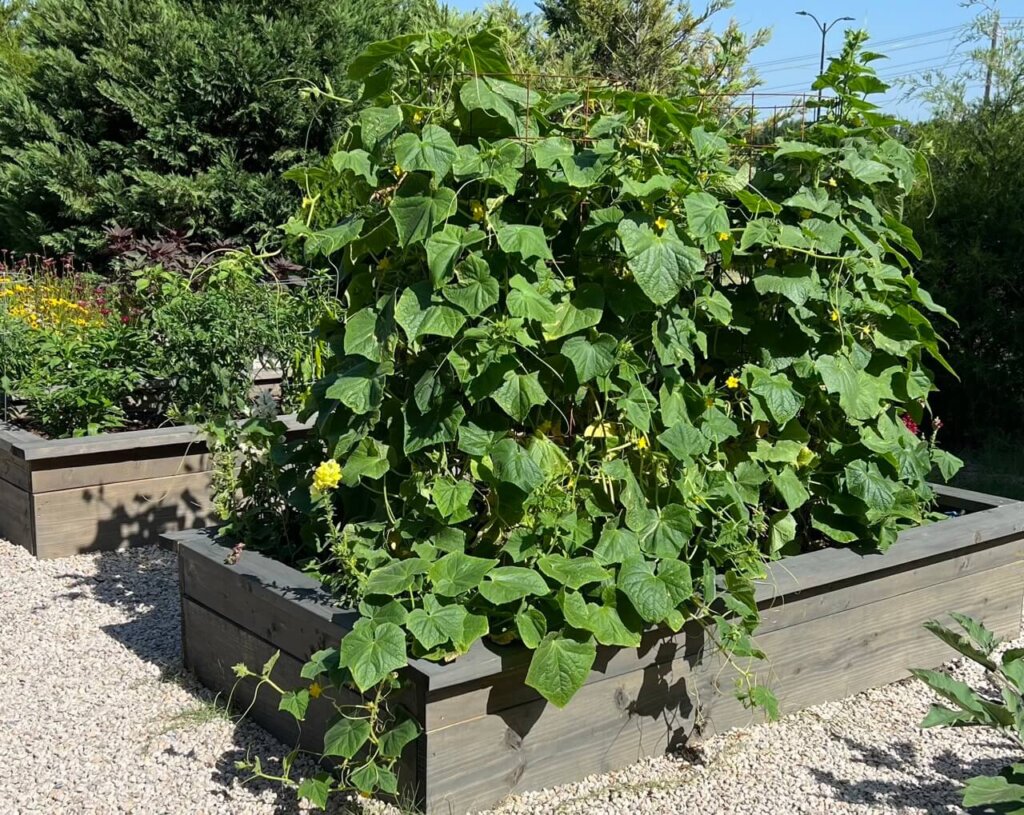
5. Watering
Cucumbers need consistent moisture to grow well, so it’s essential to water them regularly. In the spring, you can water deeply once or twice a week. Once temperatures get into the 90’s, you’ll need to water every day or every other day. It’s best to water in the morning to allow the leaves to dry out during the day, which can help prevent fungal diseases.
6. Support
Your cucumbers plants will require some form of support for the vines to grow on and to keep cucumbers off the ground. I’ve used all sorts of things from tomato cages to cattle panels to netting. It doesn’t really matter what you use as long as it’s big enough to support a fully grown cucumber plant. The vines can grow well over six feet long.
7. Fertilization
Cucumbers are heavy feeders, and they need regular fertilization to produce a good harvest. Mix a slow-release organic granular
8. Pest and Disease Management
Cucumbers are prone to various pests and diseases, including cucumber beetles, powdery mildew, and downy mildew. To manage pests, you can use floating mesh insect netting to prevent beetles from laying eggs on the plants. To prevent disease, make sure to space the plants properly to improve air circulation, and avoid overhead
9. Harvesting
Cucumbers are ready to harvest when they are firm and have a bright green color. Don’t leave the cucumbers on the vine too long or they will turn bitter and discolor. It’s always better to harvest cucumbers too early than too late.
Harvest cucumbers regularly to encourage more fruit production.
Growing cucumbers in North Texas requires some effort and attention, but if you plant them at the right time, maintain moisture, and fertilize consistently, you’ll be in the cucumber business in no time!
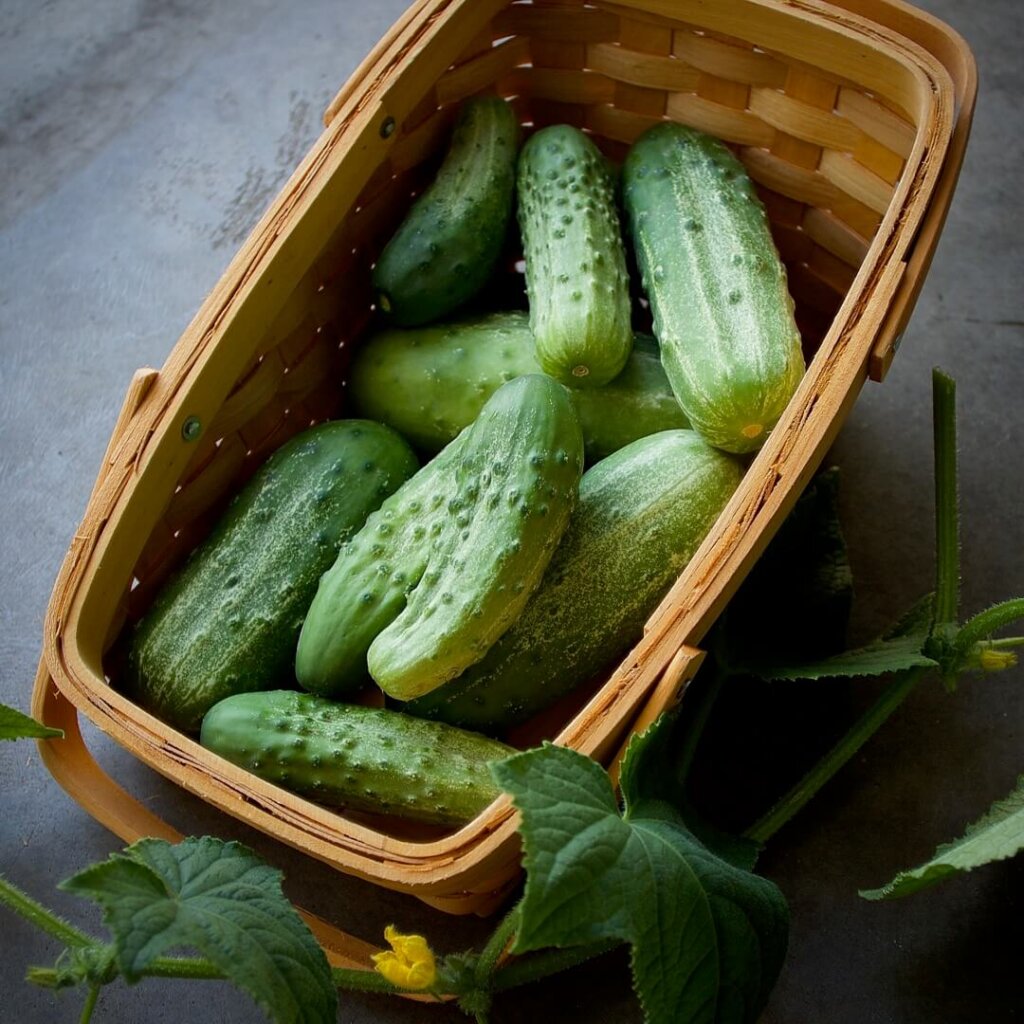
- New Plant I’m Testing: Kitchen Minis™ Bonsai Basil - April 24, 2024
- Resilient Perennials I’m Adding to My New Landscape - February 28, 2024
- 5 Ways to Enjoy Beautiful Fall Weather in DFW - October 18, 2023

